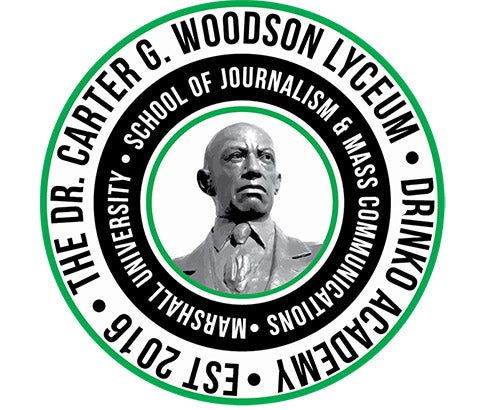For K-12, there will be three winners – a $100 prize for one student winner each at the elementary, middle and high school levels. The winners’ teachers win $50 each. The deadline is 5 p.m. Friday, Nov. 19. Parents must grant permission for the work to be shared publicly.
Posters can be sized to 11 x 15 or 8 ½ x 11 inches. Students and teachers may submit other sizes, but the entries must be a size that can be scanned for judging. K-12 entries are submitted online at the following address: https://www.marshall.edu/art/k12_2022_mu_black_history_posters/.
For Marshall students, the overall winning poster comes with a $200 prize and will become Marshall University’s official 2022 Black History Poster for the Dr. Carter G. Woodson Lyceum. Submission of an entry to this competition grants the lyceum permission to use entries to promote various lyceum and university activities. The deadline for Marshall students is Friday, Nov. 12. Marshall students should submit their entries online at the following address: https://www.marshall.edu/art/black-history-poster-competition-mu-students/.
Students may use COVID-19 topics or other health-related issues to develop ideas for the contest. Information to inspire further creative research regarding the theme is available at https://asalh.org/black-history-themes/.
Posters will be judged on how effectively they express the Black history theme. Examples of winning work from previous years can be found at https://www.marshall.edu/woodsonlyceum/poster-contest/. In addition to the poster, all students must submit a statement explaining what they learned about Black history through this competition.
Marshall students’ designs should be formatted to 11 x 15 inches and submitted as PDF or EPS files no larger than 4 MB. The winners may need to adapt their designs to additional formats. The Marshall and lyceum logos and credit line to the winner will be added to the winning posters.
Dr. Carter G. Woodson is considered the Father of Black History. Before he received international recognition for his research, he was a West Virginia coal miner. He received his high school diploma from the Frederick Douglass High School in Huntington, West Virginia, in 1896, and returned four years later as principal. A statue of Woodson, located at 820 Hal Greer Blvd., honors his connections to Huntington and West Virginia. Marshall memorialized Woodson’s achievements by creating the lyceum in his honor. For details about Dr. Woodson visit www.marshall.edu/woodsonlyceum/
Please contact Burnis Morris (morrisb@marshall.edu) or Sandra Reed (reedsa@marshall.edu), both Marshall faculty members, with questions.

